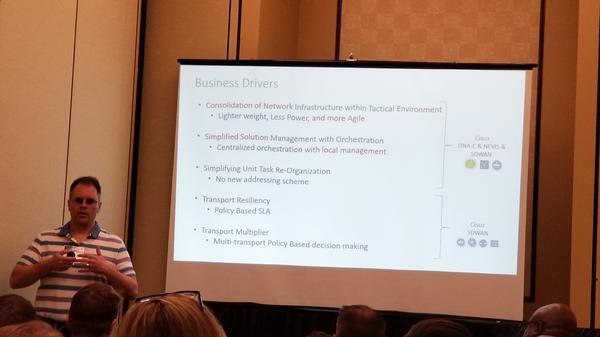 |
| PALMETTO CHAPTER CHAPTER - Mar 27, 2019 |
Enabling Mission Command with Emerging Technology |
The 2019 Technet Fort Bragg Symposium and Exposition held at Fort Bragg, North Carolina, in March was a resounding success. Paul Reimers, president of the North Carolina Chapter, opened the event and laid out the agenda. He introduced Maj. Gen. James Mingus, USA, commander, 82nd Airborne Division. Gen. Mingus discussed issues that concern the warfighter and commanders in the field who need clarity regarding information gathering that gives decision makers timely information to prosecute the contingency. The theme this year was Enabling Mission Command with Emerging Technology. The need to maximize cost effectiveness and intelligently leverage technology is imperative to enabling mission command. TechNet Fort Bragg offered an opportunity for experts and leaders from across the Army and Fort Bragg community to address various sides of the tough, controversial issues facing the U.S. Army Forces Command, U.S. Special Operations Command, Joint Special Operations Command and U.S. Army Special Operations Command community. The goal of the symposium was to allow a forum to demonstrate new, innovative ideas and share best practices that promote valuable results in technology challenges faced by our military today, especially in the Fort Bragg area. The symposium aimed to build solutions and create future road maps while providing a unique opportunity for differing opinions and positions expressed and debated. Topics focused on specific areas of mission command and addressed the hard-hitting issues facing the command, control, communications and computers (C4) community over the next 12 to 18 months. Jim Crawford, chapter director of membership services, was there to support the North Carolina Chapter as a class proctor for the continuing education unit classes covering the two days. |
Event Photographs: |
 Maj. Gen. James Mingus, USA, commander, 82nd Airborne Division, sets the tone of Technet with a an opening slide. Their mission command statement says, "A philosophy of command and control that empowers subordinate decision making and decentralized execution appropriate to the situation." This supports these known factors: competence, trust, shared understanding, commander's intent, mission orders, initiative and risk acceptance. |
 A panel headlined by subject matter experts (l-r) Sambit Bhattacharya, professor of computer science, Fayetteville State University; Bill Burnham, chief technology officer, Hewlett Packard Enterprise, U.S. Public Sector; Mike Colson, senior solutions architect, Amazon Web Services; Brig. Gen. Robert Edmonson, USA, G-6, U.S. Army Forces Command; Col. Michael Martel, USA, G-6, U.S. Army Special Operations Command; Kristen Summers, technical delivery leader, IBM Data and AI Expert Labs; and Col. Jeff Worthington, USA, J-6, Joint Special Operations Command (JSOC) discussed artificial intelligence (AI) and data analytics and its application to the warfighter. They also addressed Army questions, industry trends and how industry can help the Army leverage AI. |
 Chris Ernst, Department of Defense architect, Tactical Systems, CISCO Systems, gave an outstanding class on Survivable Wide Area Networks (WAN) in a Disconnected, Intermittent or Limited (DIL) Environment Using Software Defined WAN to Mitigate Enemy and Congestion Effects on Transmission Systems. He discussed how the warfighter can leverage these capabilities in the field. Jim Crawford, chapter director of membership services, supported this and three more classes as a proctor during the two-day event. |

